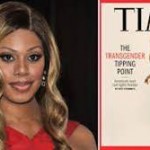Getting in the Mood with Food: Avocados
Springtime is a great time to think about aphrodisiac foods that flourish in this season.
One of my personal favorites is avocados. The very name for this extraordinary fruit is R-rated! It’s derived from the Aztec word for testicle, ahuacat. Avocados are not merely shaped like testicles; the richer, better tasting Hass (California) varieties are “warty” like the scrotum. They even hang from trees in pairs! Meanwhile, some find the voluptuous egg-like shape and texture of the fruit itself evoke feminine imagery, so take your pick! The Aztecs concocted a sexy spread called ahuaca-mull, a mix of mashed avocados, chiles, onions, and tomatoes, an ancient version of guacamole.
Early explorers to the Americas were enamored by the fruit and took it back to Europe, where France’s Sun King, Louis XIV, swore by their capacity to restore his libido, dubbing them la bonne poire, or “the good pear.” They frequently appeared on the banquet tables of the licentious 17th century court. Their reputation is so strong that Spanish Catholic priests once considered it a forbidden fruit and admonished their parishioners to avoid them.
As for their contribution to sexual health, avocados contain 20 essential nutrients, including soluble fiber, potassium, vitamin E, B-vitamins and folic acid. Avocados predominantly contain the monounsaturated fat oleic acid, which maintains levels of the beneficial high-density lipoproteins (HDL) and reduces the harmful low-density lipoprotein (LDL) cholesterol that contributes to atherosclerotic heart disease. They also act as a “nutrient booster” by enabling the body to absorb more fat-soluble nutrients, such as alpha and beta-carotene and lutein, in foods that are eaten with the fruit.
Very recent research confirms these nutrients help prevent Age-Related Macular Degeneration. All the better to visually appreciate the lines and curves of your lover!



